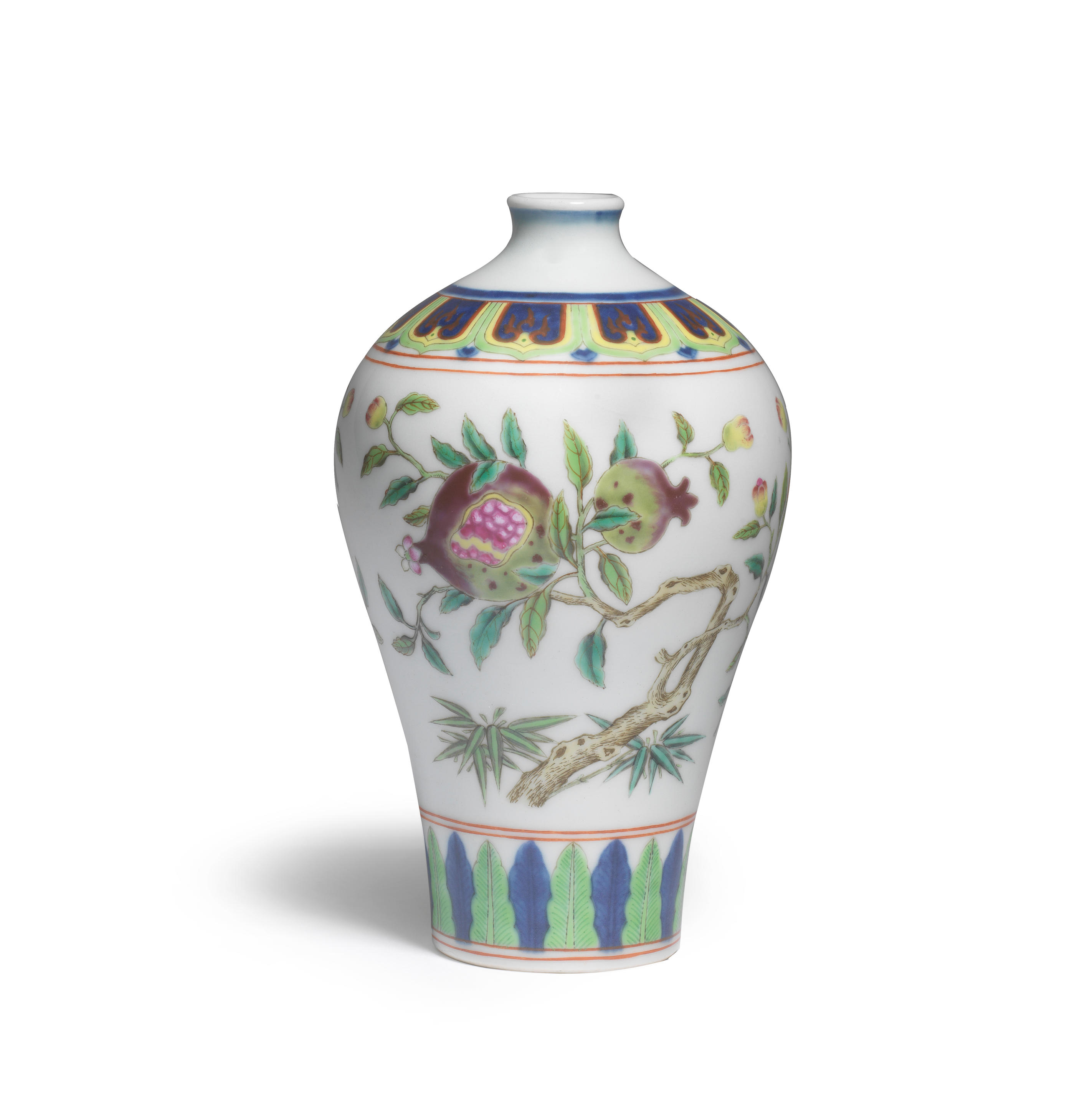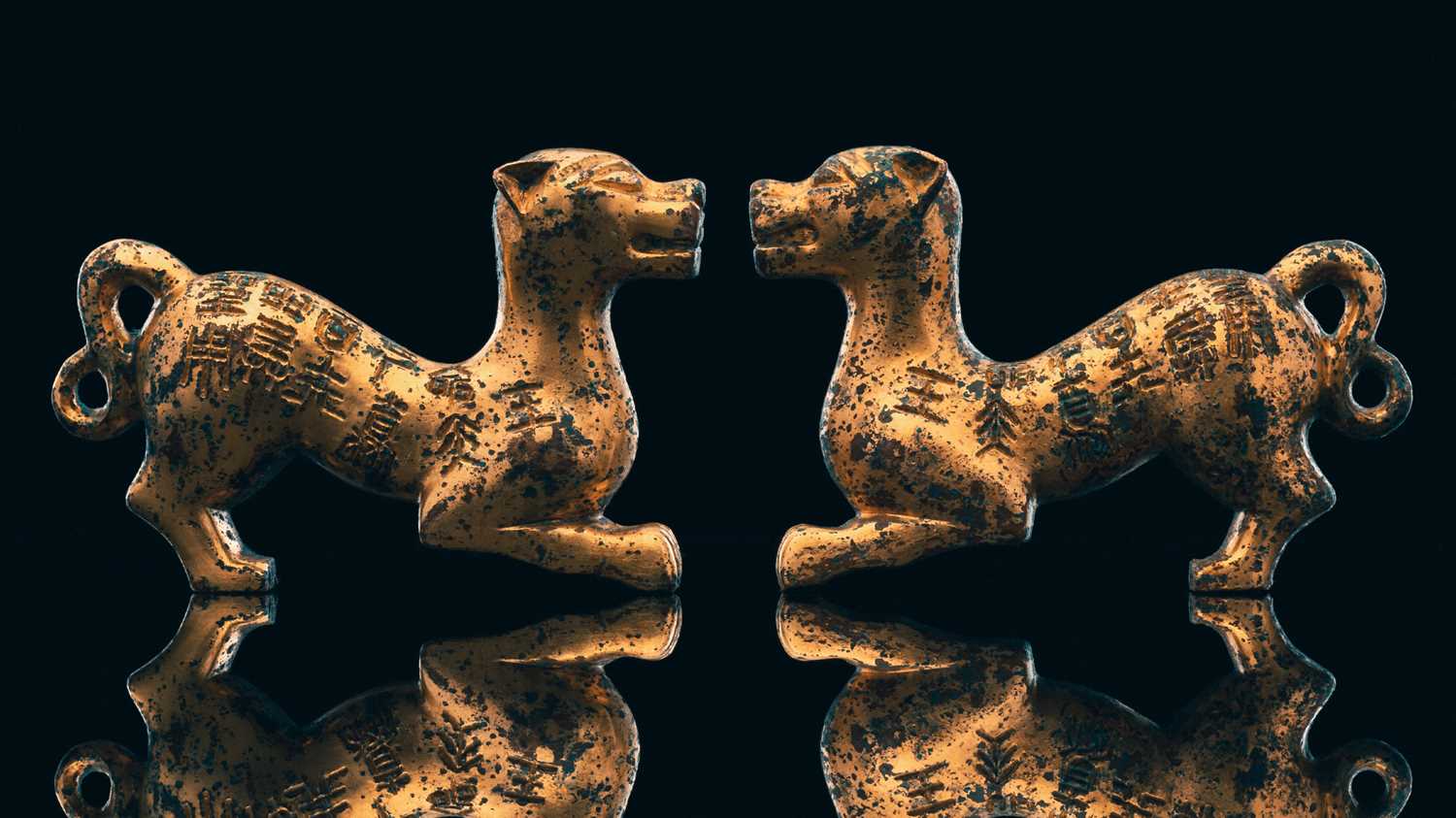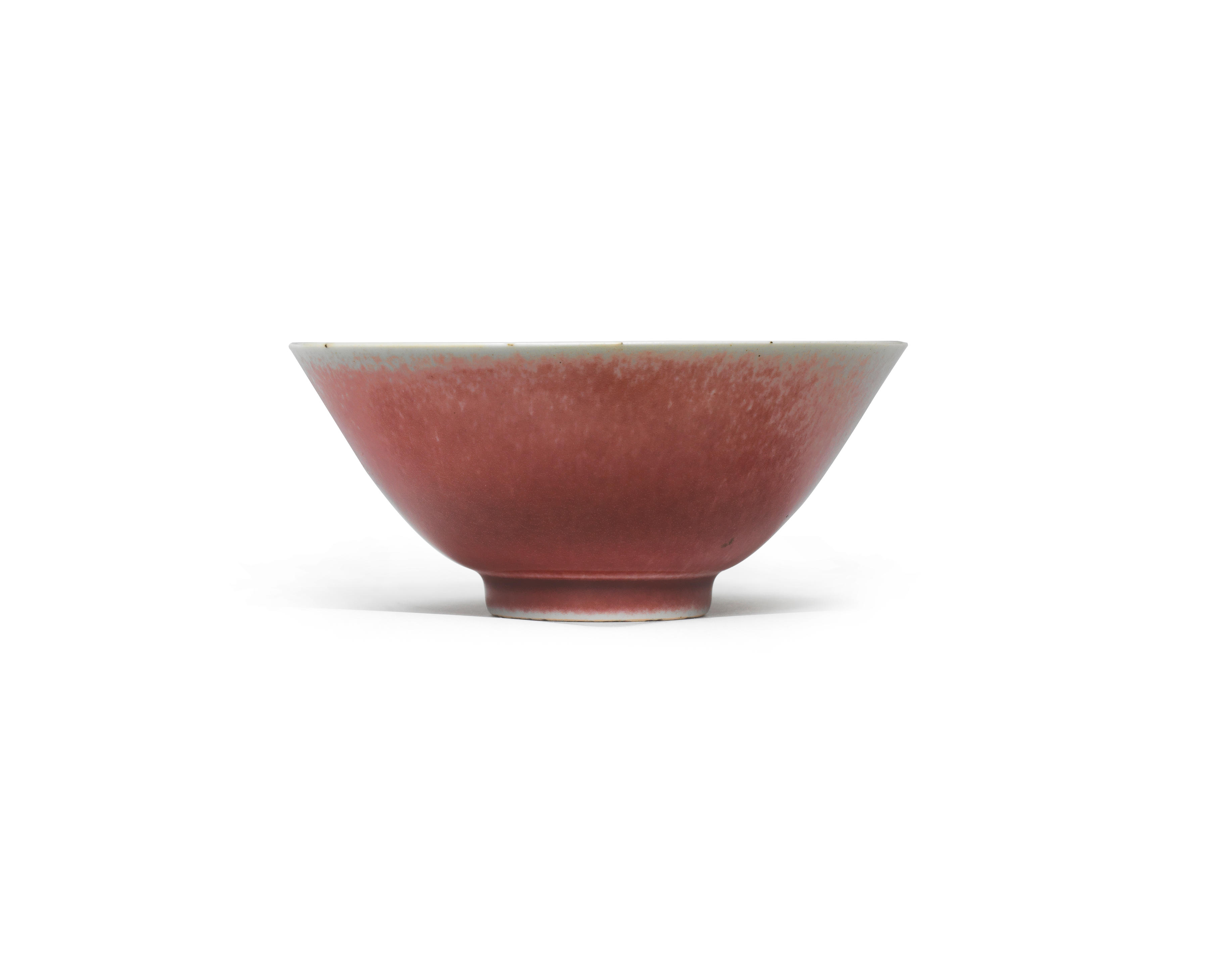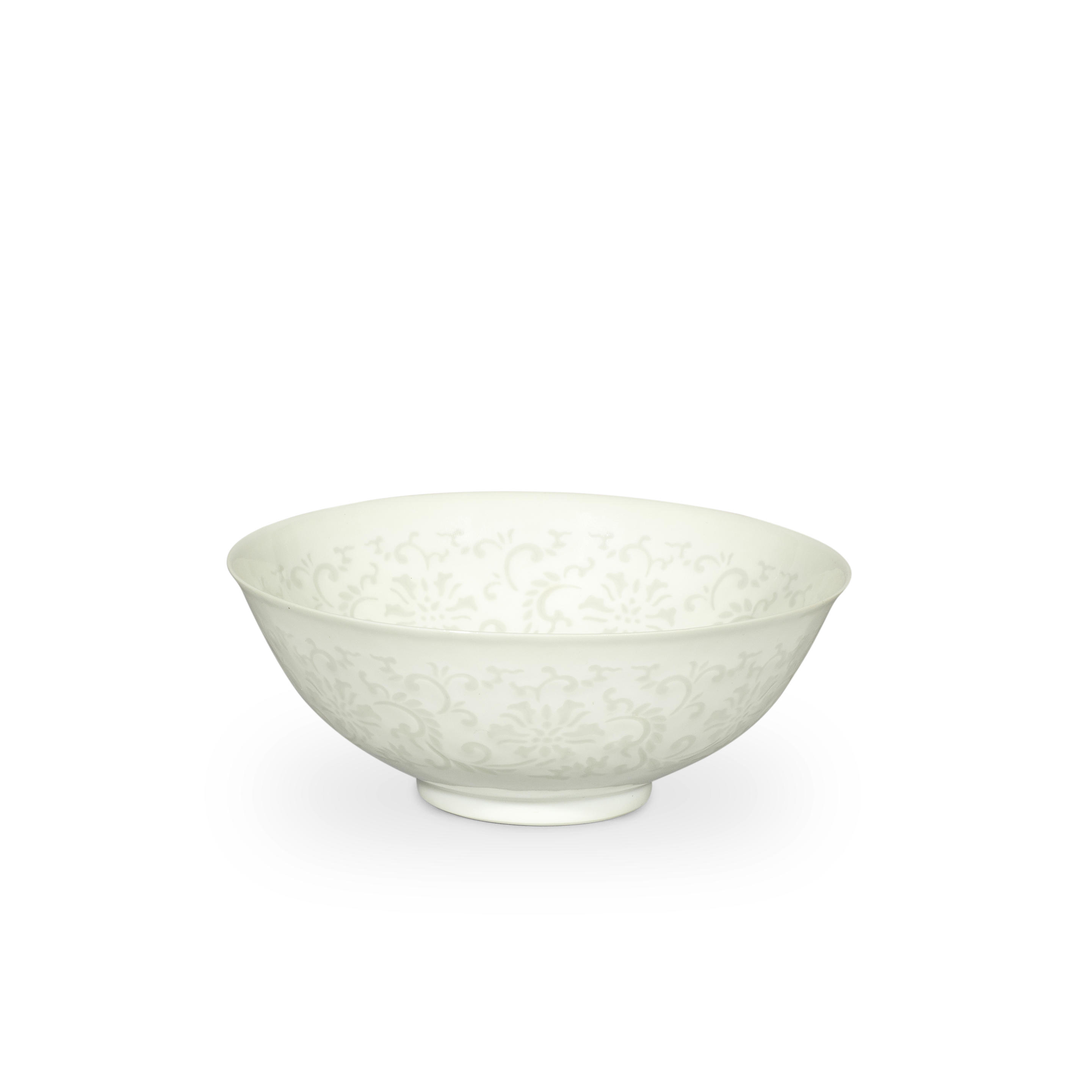A rare Imperial Chinese eight dragon roundel robe, long pao, Daoguang, with eight five clawed dragons, four are full faced and four side facing, embroidered with gold thread surrounded by five coloured clouds and bats holding auspicious symbols, with a band of running dragons inset half way along the sleeve and the horseshoe shaped cuff and neck edgings embroidered with writhing dragons, lively bats and clouds, the borders are edged with a rich brocade, the robe is lined with a blue silk damask, approximately 175cm cuff to cuff x 135cm high Provenance: From a private English Family collection, acquired before 1950 when found in the trunk of a military gentleman. 清道光 绛色八团金龙纹女龙袍 拍品来源:英国私人家族收藏,上世纪五十年代前发现于英国一位军官的卡车车厢内 This robe would have been worn by an Imperial Consort or a Princess, wife to a first or second rank Prince. Compare with a similarly constructed robe at the Palace Museum, Beijing, reference ID故00049820 The 1759 regulations depict three main patterns worn by the female Royal Courtiers during the Qing dynasty 1644-1911. A full dragon robe jifu, a full dragon waistcoat chaogua and the eight-roundel robe long pao. The long pao had a pattern variation seen with or without the lishui design along the hemline. The Imperial Empress, Consort, Princess and wives of Manchu noble men were allowed to wear the third style long pao, an eight-roundel coat. Different coloured grounds distinguished the wearers from each other. Yellow was held for the Empress and Imperial first rank consorts. The second-degree Imperial consorts wore a shade of brown, incense or golden yellow. These other colours are all one of the five Imperial 'yellows' worn at court. The Castiglioni painting 1688-1766, in the Cleveland Museum (John L Severance Fund 1969-31) depicts the Emperor Qianlong with his wife and consorts, one wearing a brown-incense eight roundel robe painted in 1736. Wives of the first and second rank Princes also wore a shade of brown. The Huangchao liqi tushi, 1759 regulations illustrate all the ranks; an illustrated plate of the Imperial yellow long pao example is housed in the British library archives. The elegant design shows these eight roundel robes are highlighted by the symmetry and balance of eight perfectly formed celestial worlds. In this example, eight five-clawed dragons (four full faced and four side facing) are embroidered with gold thread surrounded by five coloured clouds and bats holding auspicious symbols, bestowing ten thousand fold of good fortune upon the wearer. The side facing dragons clasp the pearl of wisdom indicating Imperial power. A band of running dragons is inset half way along the sleeve and the horseshoe shaped cuff and neck edgings are embroidered with writhing dragons, lively bats and clouds on a deep blue silk ground. The borders are edged with a rich brocade often seen on Imperial garments. The robe is lined with a blue silk damask woven with peonies, a symbol of feminine beauty. Most Imperial women courtiers lived their life in the northern section or inner court of the Forbidden city, once raised to the rank of consort they never left the court, it was a life-long position. They had servants and riches and access to the Imperial embroidery workshops where they would commission their wardrobe. Garments were made of the highest quality and most exquisite silk cloth. The transition of colours between the 18th and 19th century changed with the introduction of new dyes available. The colour of 'brown-incense' became more a shade of aubergine. Occasionally green dyes were used. The tailoring and dye colours clearly place this robe into the first half of 19th century, before 1840. It is originally tailored still showing the classical shape used during the 18th century. The clasping of the pearl by the side facing dragons would place this robe in the order of high royalty an Imperial consort. See the full Castiglioni painting for colour guidance. See, Book Imperial Wardrobe by Gary Dickinson and Linda Wrigg
A rare Imperial Chinese eight dragon roundel robe, long pao, Daoguang, with eight five clawed dragons, four are full faced and four side facing, embroidered with gold thread surrounded by five coloured clouds and bats holding auspicious symbols, with a band of running dragons inset half way along the sleeve and the horseshoe shaped cuff and neck edgings embroidered with writhing dragons, lively bats and clouds, the borders are edged with a rich brocade, the robe is lined with a blue silk damask, approximately 175cm cuff to cuff x 135cm high Provenance: From a private English Family collection, acquired before 1950 when found in the trunk of a military gentleman. 清道光 绛色八团金龙纹女龙袍 拍品来源:英国私人家族收藏,上世纪五十年代前发现于英国一位军官的卡车车厢内 This robe would have been worn by an Imperial Consort or a Princess, wife to a first or second rank Prince. Compare with a similarly constructed robe at the Palace Museum, Beijing, reference ID故00049820 The 1759 regulations depict three main patterns worn by the female Royal Courtiers during the Qing dynasty 1644-1911. A full dragon robe jifu, a full dragon waistcoat chaogua and the eight-roundel robe long pao. The long pao had a pattern variation seen with or without the lishui design along the hemline. The Imperial Empress, Consort, Princess and wives of Manchu noble men were allowed to wear the third style long pao, an eight-roundel coat. Different coloured grounds distinguished the wearers from each other. Yellow was held for the Empress and Imperial first rank consorts. The second-degree Imperial consorts wore a shade of brown, incense or golden yellow. These other colours are all one of the five Imperial 'yellows' worn at court. The Castiglioni painting 1688-1766, in the Cleveland Museum (John L Severance Fund 1969-31) depicts the Emperor Qianlong with his wife and consorts, one wearing a brown-incense eight roundel robe painted in 1736. Wives of the first and second rank Princes also wore a shade of brown. The Huangchao liqi tushi, 1759 regulations illustrate all the ranks; an illustrated plate of the Imperial yellow long pao example is housed in the British library archives. The elegant design shows these eight roundel robes are highlighted by the symmetry and balance of eight perfectly formed celestial worlds. In this example, eight five-clawed dragons (four full faced and four side facing) are embroidered with gold thread surrounded by five coloured clouds and bats holding auspicious symbols, bestowing ten thousand fold of good fortune upon the wearer. The side facing dragons clasp the pearl of wisdom indicating Imperial power. A band of running dragons is inset half way along the sleeve and the horseshoe shaped cuff and neck edgings are embroidered with writhing dragons, lively bats and clouds on a deep blue silk ground. The borders are edged with a rich brocade often seen on Imperial garments. The robe is lined with a blue silk damask woven with peonies, a symbol of feminine beauty. Most Imperial women courtiers lived their life in the northern section or inner court of the Forbidden city, once raised to the rank of consort they never left the court, it was a life-long position. They had servants and riches and access to the Imperial embroidery workshops where they would commission their wardrobe. Garments were made of the highest quality and most exquisite silk cloth. The transition of colours between the 18th and 19th century changed with the introduction of new dyes available. The colour of 'brown-incense' became more a shade of aubergine. Occasionally green dyes were used. The tailoring and dye colours clearly place this robe into the first half of 19th century, before 1840. It is originally tailored still showing the classical shape used during the 18th century. The clasping of the pearl by the side facing dragons would place this robe in the order of high royalty an Imperial consort. See the full Castiglioni painting for colour guidance. See, Book Imperial Wardrobe by Gary Dickinson and Linda Wrigg








.jpg)





Try LotSearch and its premium features for 7 days - without any costs!
Be notified automatically about new items in upcoming auctions.
Create an alert